The 5 Best Sealants for Tubeless Tires in 2020
If you’re riding tubeless tires, you’ll need to fill them up with sealants to seal the tires in case of punctures. Otherwise, that would defeat the purpose of running a tubeless setup in the first place.
As the tubeless setup is getting more popular these days, there are several options on the market today and that number continues to grow and more cyclists go tubeless.
If you come from a mountain biking background, then sealants are nothing new as they’ve been used in mountain bike tires for many years.
But if you’re running tubeless road bike tires or even gravel tires, then you’ll want to know what sealants are available today.
Our Favorite Picks
Stan’s No Tubes
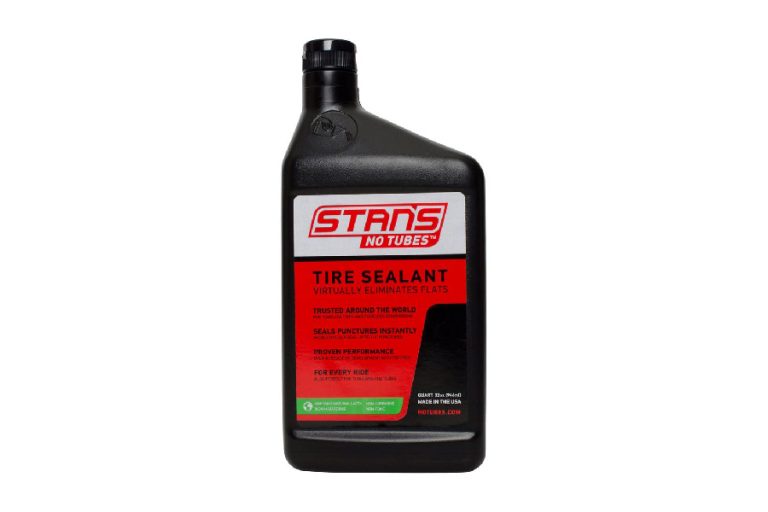
With Stan’s No Tubes sealant in your tote, you can pretty much kiss flats goodbye.
If you ride on tubeless-compatible tires, using this sealant is as easy as pouring 2 to 4 oz on each tire, popping the tires onto the bead, and then giving them a good spin to even everything out. It promises to protect your tires from leaks and punctures that are as big as a quarter-of-an-inch.
Make sure to check it every few weeks because sealants can dry out over time. And remember that a little goes a long way. If you have a road and mountain bike, the quart-size jug of Stan’s should last you several months.
Effetto Mariposa Caffelatex
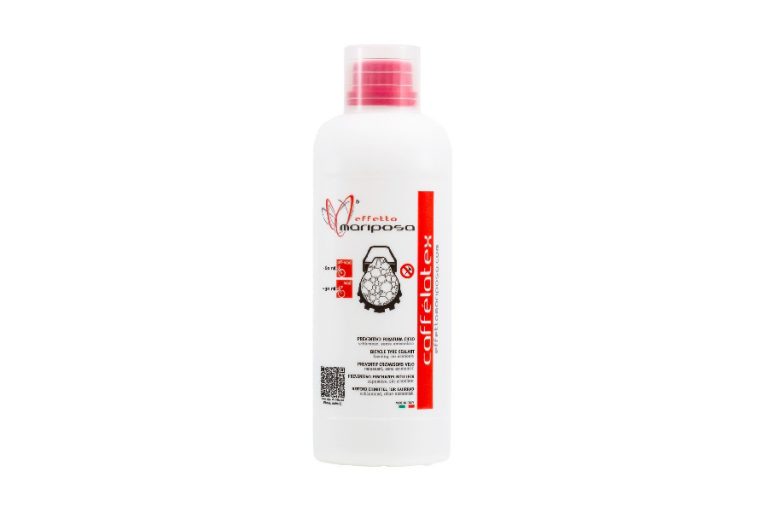
Designed for high-level cyclists who can’t be slowed down by a leak or puncture, the Effetto Mariposa Caffelatex is one of the faster-repairing options on the market today.
We really like how the engineers at Effetto Mariposa figured out how to turn the liquid sealant into foam once agitated by spinning the wheels. As a result, the sealant spreads evenly inside the tire’s cavity. After about 15 minutes of still stillness, it turns back into a liquid.
The lifespan depends on what kind of tires you use. Tubular tires can go an entire year on a single coat. Tubeless-ready tires will last one to four months, depending on how hard you ride.
Orange Seal
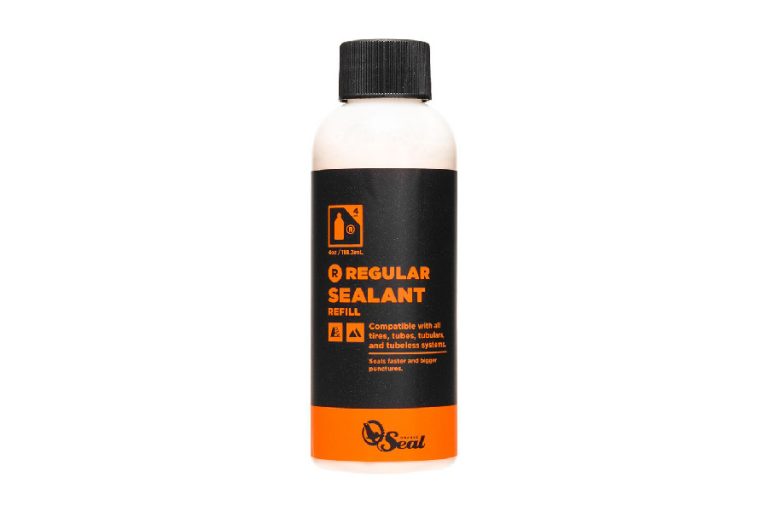
Designed for mountain bikers, sealing up your tires with the Orange Seal regular sealant can give you more confidence in your riding since you won’t be worrying about getting a puncture.
The company promises the sealant creates a permanent plug in the tires that don’t leak through thinner sidewalls. One thing we want to see in future products is measurement marks on the bottle so we can more easily determine how much sealant we’re using.
Muc Off
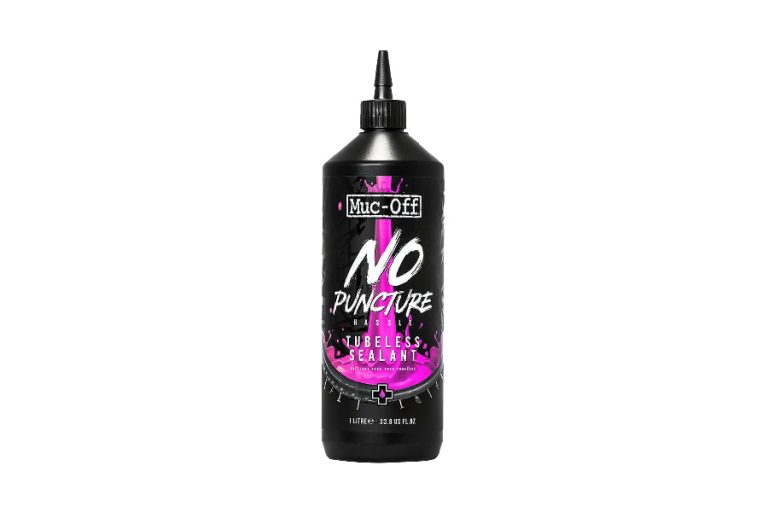
Designed for downhill, enduro, and road riding, the Muc-Off sealant is extremely lightweight and can last more than six months off a single application.
The microfiber modules do a great job of sealing up punctures and leaks up to 6mm. It’s also biodegradable and non-corrosive and washes off with water.
Cyclists who have tried other brands complemented the Muc Off sealant for working significantly quicker. And this is a bit odd, but it has a surprisingly delightful scent.
It only comes in a one-liter option.
Specialized 2Bliss Ready
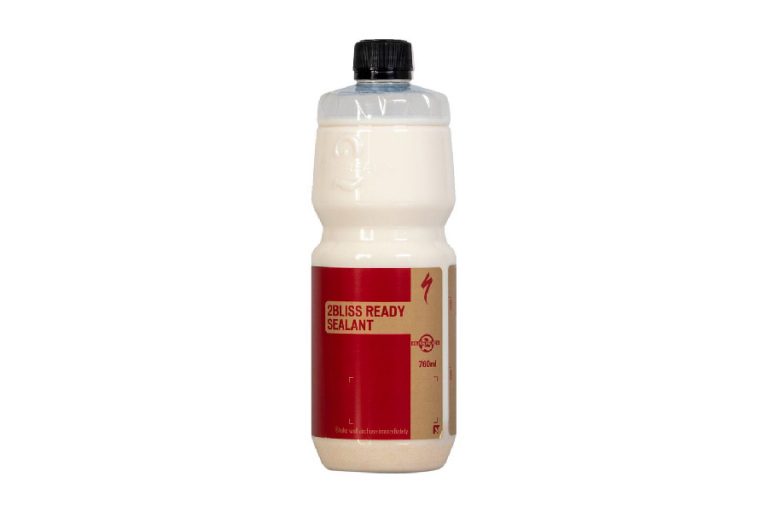
Good on-road or mountain tires, the Specialized 2Bliss Ready tire sealant can seal up punctures up to 6mm and be used in an extreme range of temperatures.
Specialized is one of the top brands in cycling and most of its products are backed up by research and testing in the lab. Simply squirt it through the valve stem and spin your tires to seal everything up. You can use it from -4ºF all the way up to 158ºF.
For the price and performance, this is a very solid option.
Tubeless Tire Sealant Buying Guide
Apply the correct amount, spin the tire, and wait a little bit. There’s not too much involved when it comes to using a tire sealant.
Simply put, tire sealant is a special type of liquid that can quickly plug and dry small holes in your tubeless tire relatively quickly.
If you’re riding tubeless, it is pretty much a must-have in your garage where you store your bicycle.
Do I need a sealant?
Technically, you don’t need to use tire sealant, especially as tubeless tires become even more durable. You can also patch small holes just as you would with a tubular tire. But for the cost of sealants today, it’s worth the extra time to prevent those small leaks and punctures from ending your ride for the day.
It’s important to note that a sidewall cut in your tire is not going to be saved by any sealant. There are some other things you should keep in mind when shopping for a sealant that’s best for you.
Bottle Size
The bottle size or the amount of sealant you opt to purchase purely depends on your needs.
For most average cyclists, you’re not going to need the big bottle. A 32 oz (946 ml) bottle of Stan’s Notubes tire sealant, for instance, is going to last you throughout the entire year, and perhaps longer.
Obviously, if you run a larger cycling shop, you’re going to want a larger bottle, especially if you’re repairing bikes and tires.
The bigger question you’ll have to answer is if you want to carry tire sealant with you in a gear bag on any of your rides.
The Orange Seal comes in a small, 4 oz (118 ml) size that could be perfect for longer rides on rough terrain where a puncture could be possible. The little size of that sealant is worth its minimal weight if you need to fix a leak in a pinch.
Muc-Off actually makes a 140 ml pouch that’s perfect for keeping with you on the ride.
Sealing Capabilities
When it comes to bike tire sealants, this is probably the biggie.
How well can it seal? And how big of a puncture can it seal?
Most sealants on the market today can handle a puncture of about 6mm (about 0.25”). Any larger and you might need a new tire.
For example, Stan’s is rated to seal leaks up to 0.25”.
Most leaks you need to seal won’t even be visible to the naked eye, so the fact many of these sealants can handle a hole the size of a quarter-of-an-inch is pretty impressive.
Sealant Lifespan
When you decide to go tubeless, you’re also committing to a steady regiment of using a tire sealant every one to four months, depending on how much you ride and what types of terrain you tackle.
Average temperatures can also play into the lifespan of a sealant. If you’re not riding tubeless, your sealant is going to last you a little longer.
If you use Effetto Mariposa Caffelatex, for instance, you can expect the following lifespans for each type of tire :
- Tubular : up to 1 year
- UST Tubeless tire : 2 to 6 months
- Tubeless-ready tire : 1 to 4 months
- Tube-type tire : 1 to 3 months
A good rule of thumb is to apply fresh sealant once every three months.
Author Recommended Reads
